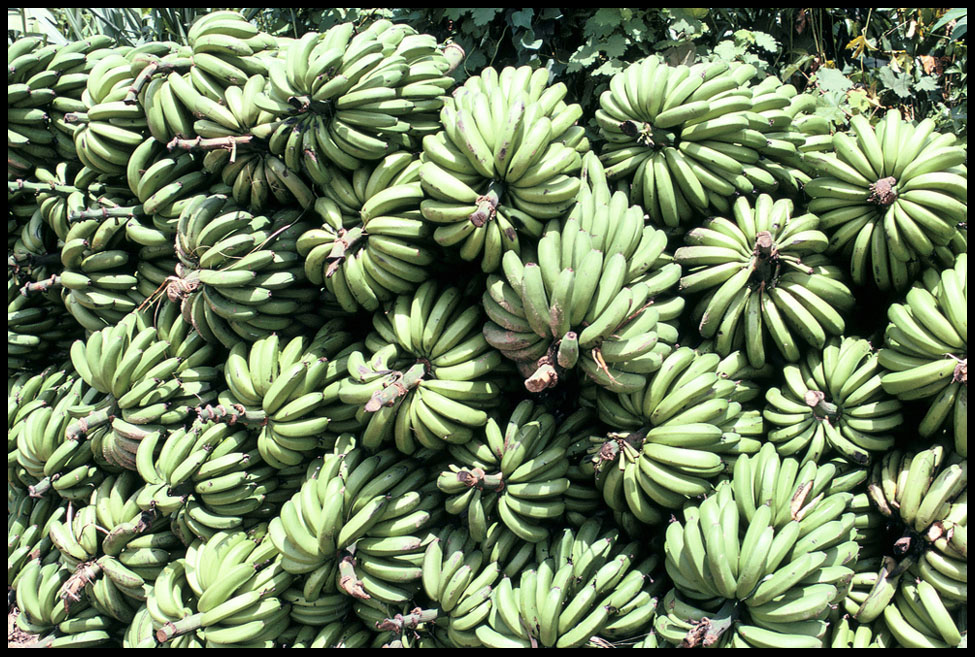Image Courtesy of the World Bank. Shared via a Creative Commons License.
—-
They sat quietly, the newly acquainted strangers, across the oval oak the girl was bluntly informed all meals would be eaten at. The grandmother was preparing them a snack, as dinner was still simmering on the stove.
“You eat banana,” the grandmother informed more than asked.
The girl nodded.
“Speak up,” said the grandmother.
“Yes,” the girl answered.
A glass of milk, two water crackers, and a bright yellow banana were meticulously placed in front of the girl as to not touch the wood of the table, only the orange hued placemat.
“Thank you,” said the girl.
The grandmother nodded.
The girl bit into the speckled brown cracker, layers of crumbs tumbling onto the plate, while the cooking Ackee’s potent aroma tickled her nostrils. The grandmother watched with grinning eyes as the small stranger munched. Forced together by circumstance, their faces mirrored fifty years into past and future, the grandmother and girl sat in the vibrant kitchen inspired by a life, oceans away, a life the grandmother often kept to herself. The girl then watched as the grandmother grabbed a banana, turned it upside-down, and peeled the fruit from the wrong side. Gripping the rough bottom stub and cradling its stem, the girl pondered the peculiar action, and could not help herself.
“Why are you eating your banana upside down?” she asked.
The grandmother responded, “I’m not, you are.”
“No I’m not,” the girl assured.
The grandmother shook her head.
“But,” the girl sat confused. “Everyone eats bananas this way.”
“Does that make it right?” The grandmother asked, reclining in her wicker chair. “Do you know how bananas grow?”
The girl did not.
The grandmother pointed to a pastel portrait of growing green bananas behind a bushel of breadfruit resting in a chestnut brown wagon.
“You see,” she motioned to the painting. “They grow with the stem at the bottom. When you peel it this way, you don’t have the little veins falling all over; they peel down with the skin. My father taught me that.”
The girl questioned, “He did?”
“Yes, he used to grow bananas.”
The grandmother began, as though caught a drift on a wave of memory, she told the girl of her father and his banana trees. He was a farmer, a distributer of yam, corn, and peas. He would spend months in the fields, fields he proudly called his own, to harvest the produce that fed, clothed, and supported the ones he loved. He would frequently fall wounded, the grandmother remarked, blisters, swollen ankles, crackling knees, and a pulled back were too often his company amid the rows of vegetables; but this did not stop him, the grandmother informed, it only pushed him further. As he was the first of his family to own his own land, the first to do what he saw fit in the fields versus what he was told, the first to pocket the profits of the land he worked.
He grew bananas as well, though not for market, for his children. The grandmother told the girl there were two banana trees paralleling their house, and each season the bananas became ripe, her father would pick them and share the fruit amongst his offspring. “You must always remember,” the grandmother imitated her father, “to enjoy the, fruits, of your labor.”
The then cross-legged girl who sat across from her grandmother smiled when the old woman laughed a boisterous chuckle that echoed through the empty house only they employed. The girl slipped into her grandmother’s story, lost in a tale filled with colors, foods, and music from a world she then discovered she was a part of. The grandmother concluded by relaying a message to the girl, given to her by her father.
“We must do better by our children,” the grandmother whispered, fighting the water built up in her eyes. “We must give them more than what was given to us.”
“Give them more what?” The girl asked in genuine curiosity.
The grandmother lifted her fruit as though toasting the inquiry, “More bananas, of course!”
The two smiled the same smile then laughed the same laugh, in the vibrant kitchen that occupied an oval oak table topped by orange placemats, a portrait of green bananas, raw breadfruit, and a girl sitting across from her grandmother, munching on crackers, milk, and right-side up, bananas.
—-
Morgan Christie’s work has appeared in Hippocampus, Blackberry, Germ Magazine, Bitchin’ Kitsch, Vagabonds, Anthology of the Mad Ones, and was a finalist in Glimmer Train’s 2013 Family Matters competition. She has dedicated “Right Side Up” to her grandmother, Edith, a woman of great fortitude, wit, and effervescent fervor – and whom Morgan loves deeply.
